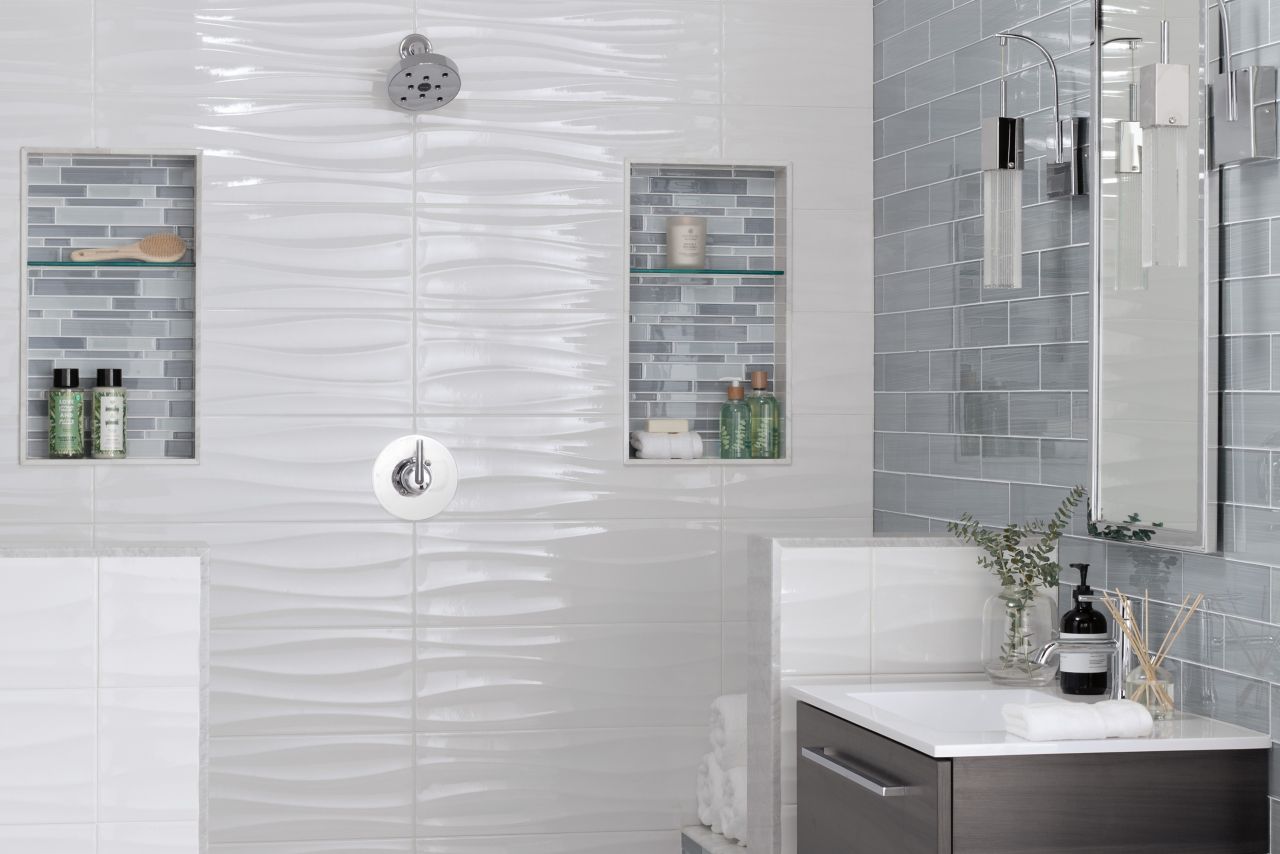Top Cost Considerations When Retiling a Bathroom
Renovating your bathroom can breathe new life into your home, but it's important to be mindful of the costs, especially when it comes to retiling. In this guide, we'll explore the key considerations to keep in mind when determining how much it will cost to retile a bathroom, so you can effectively budget for your project.
Cost Factors to Consider
When calculating the budget for your bathroom retiling project, the two main buckets that expenses fall into are labor costs and material costs.
It is important to discuss with your contractor key items you want in your project before the start. Knowing as many details as possible will help the project run smoothly, mitigate delays and provide clear communication. It is also always best to have all of your materials on site before the project starts. Projected shipping deadlines might get pushed back, and it will always be more expensive to pause a project and resume it later. Also, have your installer inspect your tiles and installation materials before work begins. Sometimes tiles arrive broken or things like dye lots will be mixed, and looking things over before the project starts can save a ton of time (and money) once things get going.
Retiling a Bathroom Floor
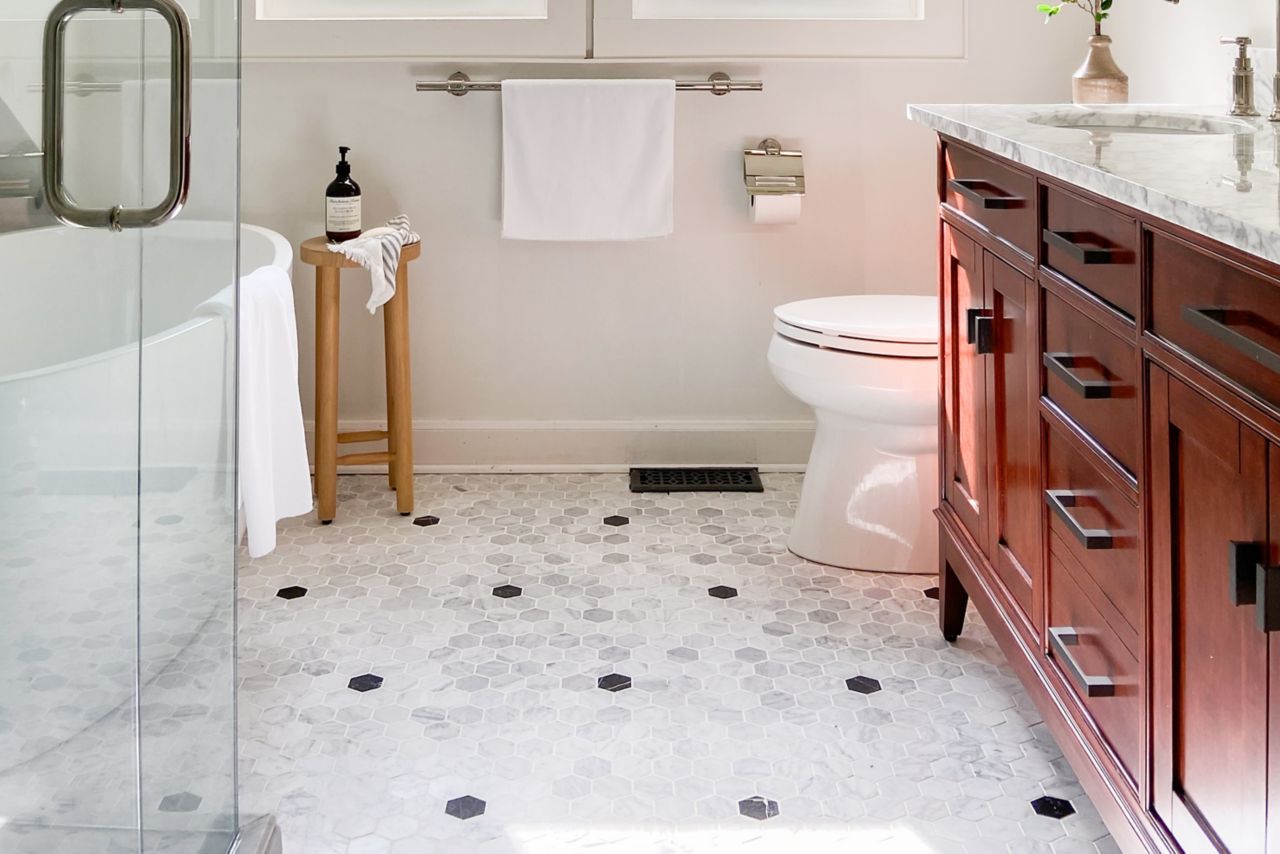
The complexity and size of the project will influence the overall labor cost, but in most cases you can expect to allocate a substantial portion of your budget to skilled labor. Examples of significant changes that can increase the labor cost to tile a bathroom floor include:
- Moving or adding plumbing (such as adding a freestanding tub)
- Increasing the square footage of the space (moving walls)
- Totally changing the layout of the room (such as moving the toilet, vanities or shower)
- Using high-end tile that required specialized installation techniques or extensive preparation prior to tiling
Retiling a Shower
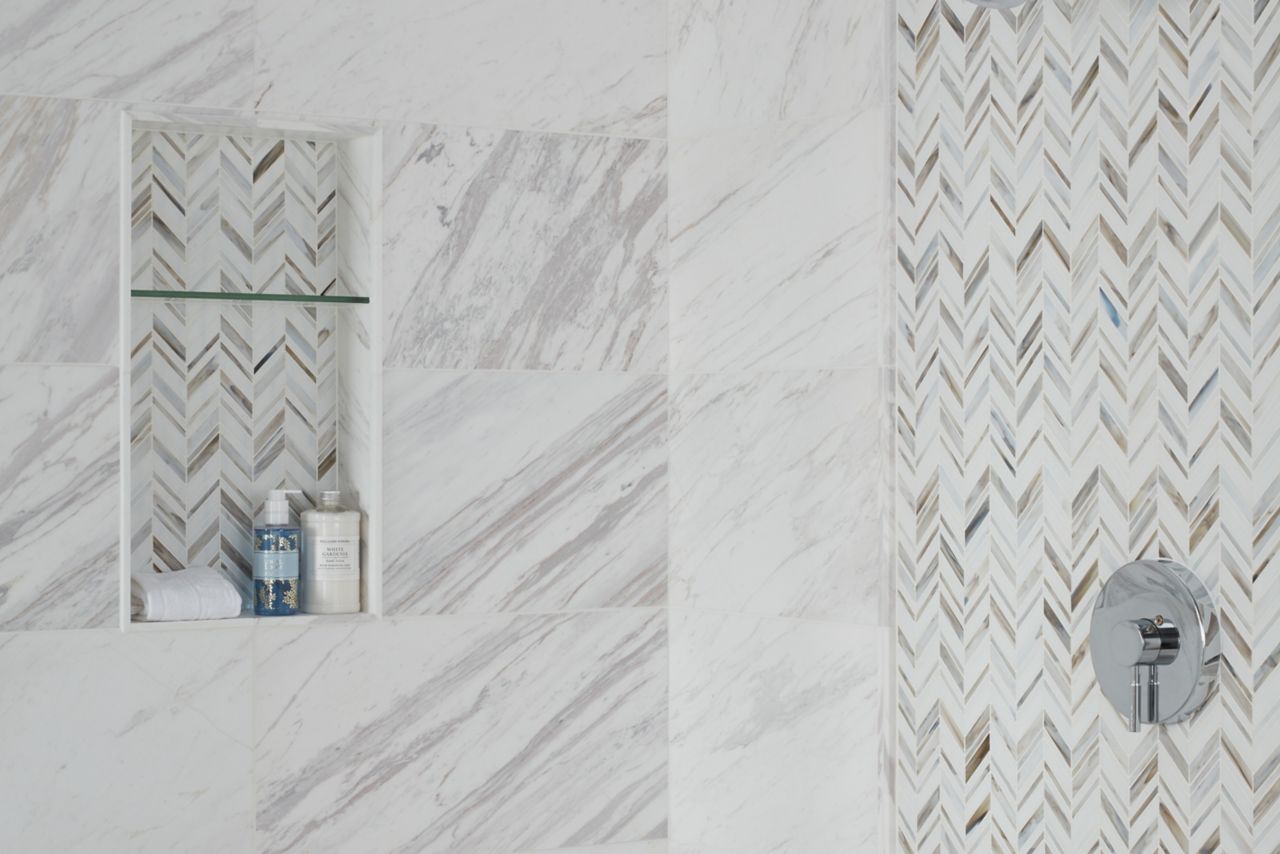
Retiling a bathroom shower involves many considerations. The final cost not only includes the price of the tiles, but also factors in preparation of the area, plus waterproofing and tiling. Depending on your preferences, you might opt for premium materials, multiple trim pieces and accessories (like corner shelf pieces) for a luxurious shower experience, or choose budget-friendly options that streamline the number of elements in your design without compromising the quality of the tile installation itself.
Cost by Material: A General Guide
Selecting the right tile material is crucial for both aesthetics and cost. Understanding the cost implications of different materials helps you make informed decisions that align with your budget and design preferences. Below is a breakdown of material costs by price range, durability, installation, and value.
Natural Stone
Price range: The price of natural stone tiles varies significantly depending on the type of stone chosen (marble, granite, limestone, travertine, slate, etc.). On average, prices can range from $5 to $20 or more per square foot. The cost is influenced by factors like the stone’s rarity, quality and source.
- Durability: Natural stone tiles are prized for their natural beauty and unique patterns. However, the durability varies depending on the type of stone. For example, granite and slate are known for their hardness and resistance to scratches, while marble and limestone may require more care due to their softer nature. Natural stone tiles are generally more porous than porcelain or ceramic, making them susceptible to stains if not properly sealed. Regular sealing and maintenance are essential to preserve the appearance and durability of natural stone tiles. Be careful when choosing natural stone for a wet area like a backsplash or a shower as chemicals and organic matter can affect the look of the tiles even if sealed on a regular basis.
- Installation: Because natural stone is softer than porcelain or ceramic tile, installation guidelines are stricter. Labor costs associated with natural stone tile installation will be higher, reflecting the skill and precision required. Consider this into your overall budget when selecting a natural stone tile.
- Long-term value: Natural stone tiles are renowned for their timeless beauty and unique aesthetic appeal. Despite higher up-front costs and increased maintenance demands, many homeowners consider the long-term value of natural stone as an investment. With proper care, natural stone tiles can retain their beauty for decades.
Porcelain Tile
Price range: Porcelain tiles are generally priced higher than ceramic tiles due to their durability and versatility. Prices can range from $3 to $10 per square foot, depending on factors such as design, size, and brand.
- Durability: Porcelain is known for its exceptional durability, making it suitable for high-traffic areas and even outdoor applications. The dense composition of porcelain makes it resistant to moisture, stains, and scratches.
- Installation: Installing porcelain tiles may require specialized tools due to their hardness. Labor costs might be slightly higher compared to ceramic tile installation, reflecting the expertise and additional time needed to install.
- Long-term value: While the up-front cost of porcelain may be higher, its long-term value is often realized through its durability and resistance to wear and tear.
Ceramic Tile
Price range: Ceramic tiles are generally more budget-friendly compared to porcelain tiles. The price range varies based on factors such as design, size, and brand. On average, ceramic tiles can be priced between $2 to $8 per square foot. The affordability of ceramic tiles makes them a popular choice for homeowners looking for a cost-effective flooring option.
- Durability: Ceramic tiles are known for their durability, although they are generally not as dense and hard as porcelain tiles. They are still suitable for various applications, especially in indoor spaces with moderate traffic (like an entryway or mudroom). Ceramic tiles are resistant to moisture, stains, and scratches to a certain extent. While not as robust as porcelain, they offer a good balance of durability and affordability.
- Installation: The installation of ceramic tiles is typically less labor-intensive compared to porcelain tiles. The softer nature of ceramic tiles makes them easier to cut and shape, requiring standard tile installation tools. The installation process is generally straightforward, and labor costs are often lower compared to more demanding materials like porcelain or natural stone.
- Long-term value: Ceramic tiles provide good value for homeowners seeking a durable and cost-effective flooring solution. While they may not have the same level of durability as porcelain, they still offer longevity when properly maintained. Regular cleaning and maintenance can help preserve the appearance and functionality of ceramic tiles over time. The lower up-front cost and reasonable durability make ceramic tiles an attractive option for those on a budget.
Professional vs. DIY: Which is Right for You?
Tackling a bathroom tiling project yourself can be rewarding but comes with challenges. After you have decided on your bathroom tile design, assess the difficulty level of the project and consider your own skill level. While a DIY project might save money on paper, hiring a professional ensures precision and expertise.
Is tiling a bathroom a DIY project?
The answer to this question will be different for everyone. It’s important to honestly assess your skills and the complexity of the project, and be prepared for the learning curve.
What is your skill level with tools and installation materials? In addition to the up-front financial investment in purchasing tools (which can be significant), also consider the time it would take for you to learn how to work with installation materials such as thin set and tile cutting tools.
If tackling a bathroom project on your own is something you want to conquer and time is of no consideration, you can absolutely tackle it with success by ensuring you follow industry guidelines and manufacturer recommendations.
If in doubt, consulting with a professional is always a wise choice. You can always consult and book a 1:1 with me: That Tile Chick on Matriarchy build or take my course on Building and Tiling a Waterproof Shower.
How to Save on Retiling Costs
Renovating your bathroom on a budget doesn't have to mean compromising on quality. Explore creative ways to save on retiling costs, such as reducing the scope of work and choosing budget friendly materials.
Below is a guide with a range you can use to reference bathroom remodeling costs. Depending on your choices (as well as labor and material costs in your location), you may fall in the following ranges:
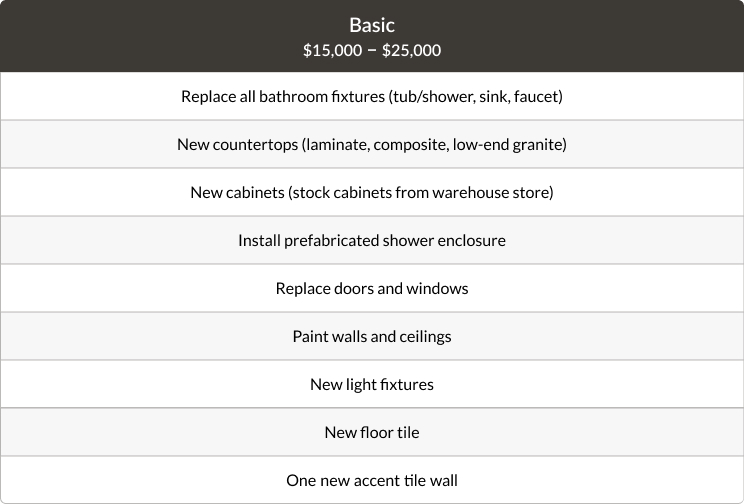
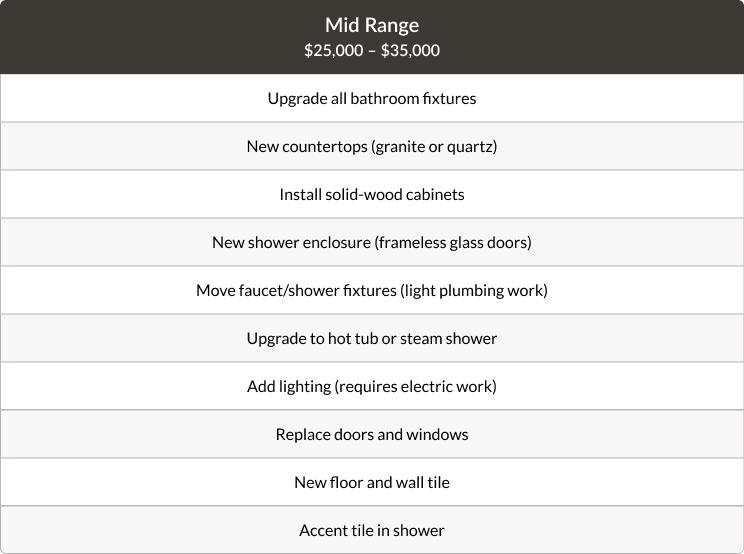
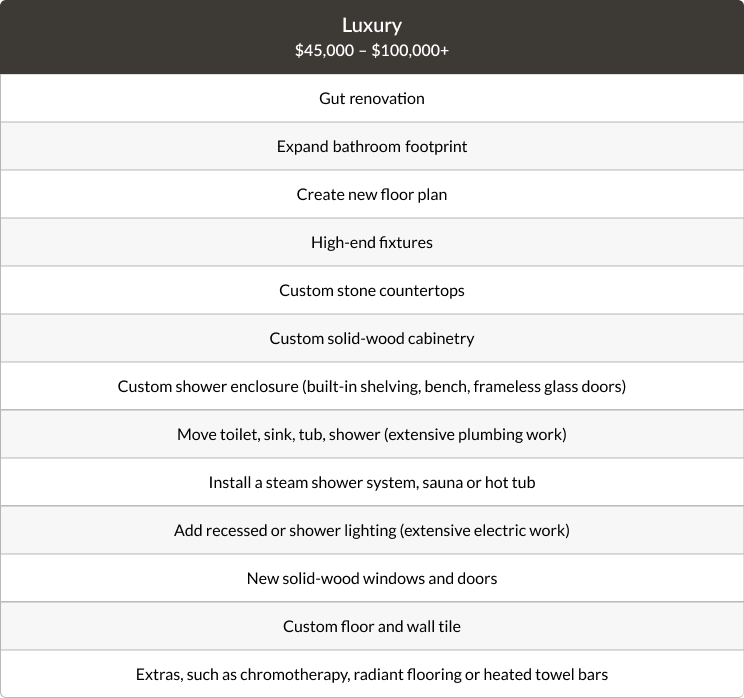
Please note: These ranges are for illustrative purposes only. Certain design preferences will drive up labor costs significantly due to intricacy or the special skill and extra time required to complete. Actual costs will vary based on unique factors, including market prices for labor and materials in your location.
Where Not to Cut Back
There are many ways to save money when retiling a bathroom, but you should never do so by trying to pay less for labor. Ensuring you have the right person for the job is crucial because if they make a mistake on the waterproofing and build of your shower, it can be a costly fix. You risk thousands of dollars’ worth of damage when you hire an inexperienced person to build something as complex as a shower in your home.
Another common mistake is trying to keep your contractor from knowing your actual project budget. Contractors are professionals, and we should be a resource in helping you find creative solutions to build the bathroom of your dreams without breaking the bank. But we can’t do that if key pieces of information aren’t clear going into the project—so keep an open line of communication.
Bathroom Retiling FAQs
In Conclusion
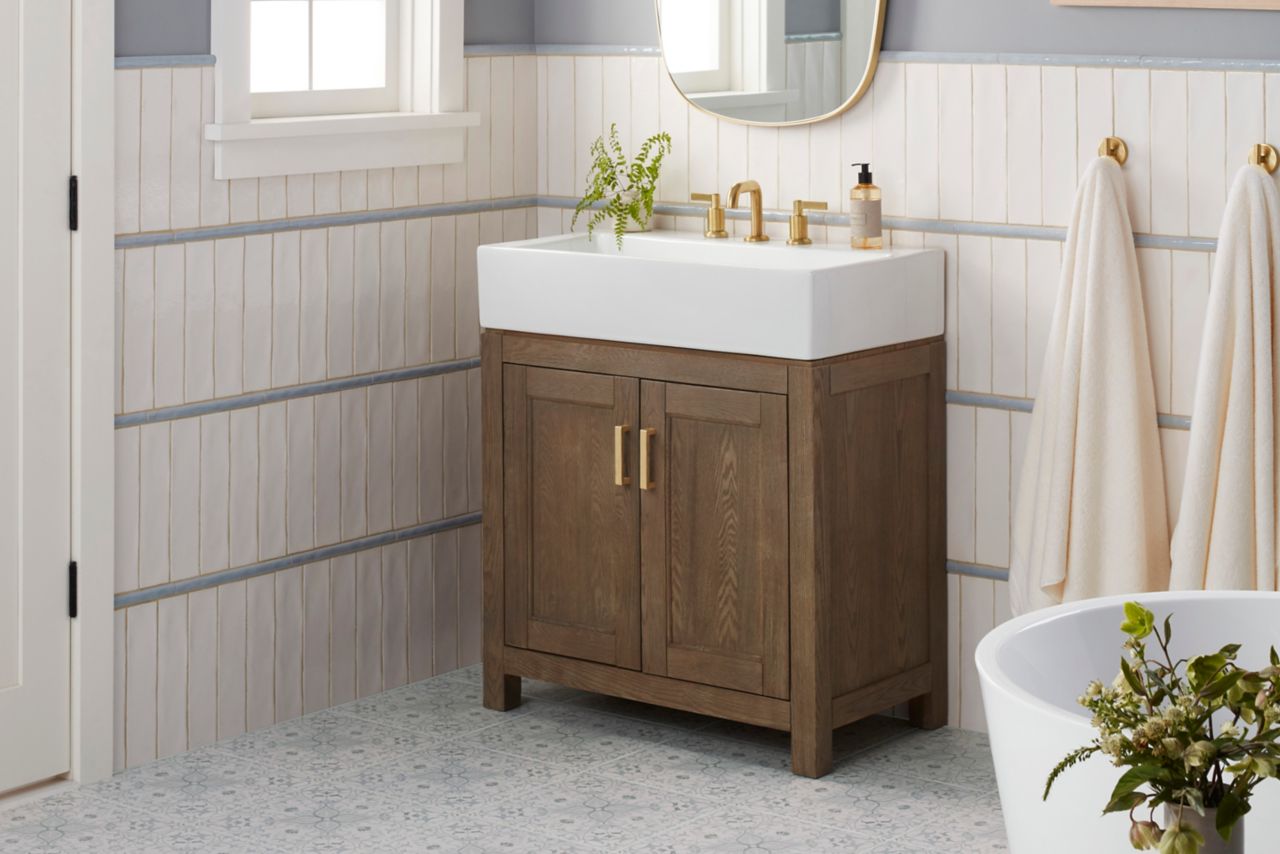
As you embark on your bathroom retiling journey, keeping these cost considerations in mind will empower you to make informed decisions. Whether you choose to enlist professional help or embark on a DIY adventure, thoughtful planning and communication with your installer ensures a beautiful bathroom that aligns with your vision and budget.


